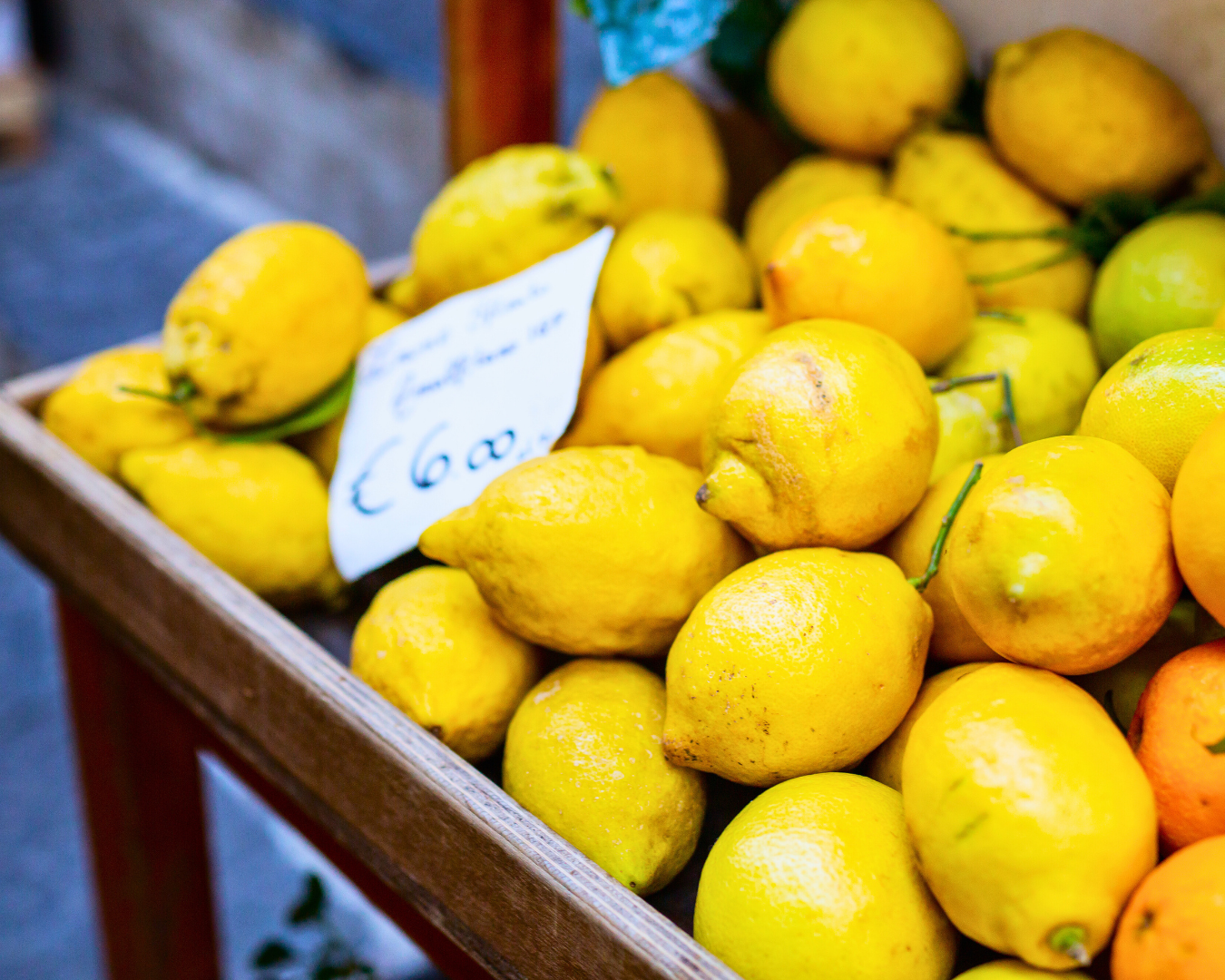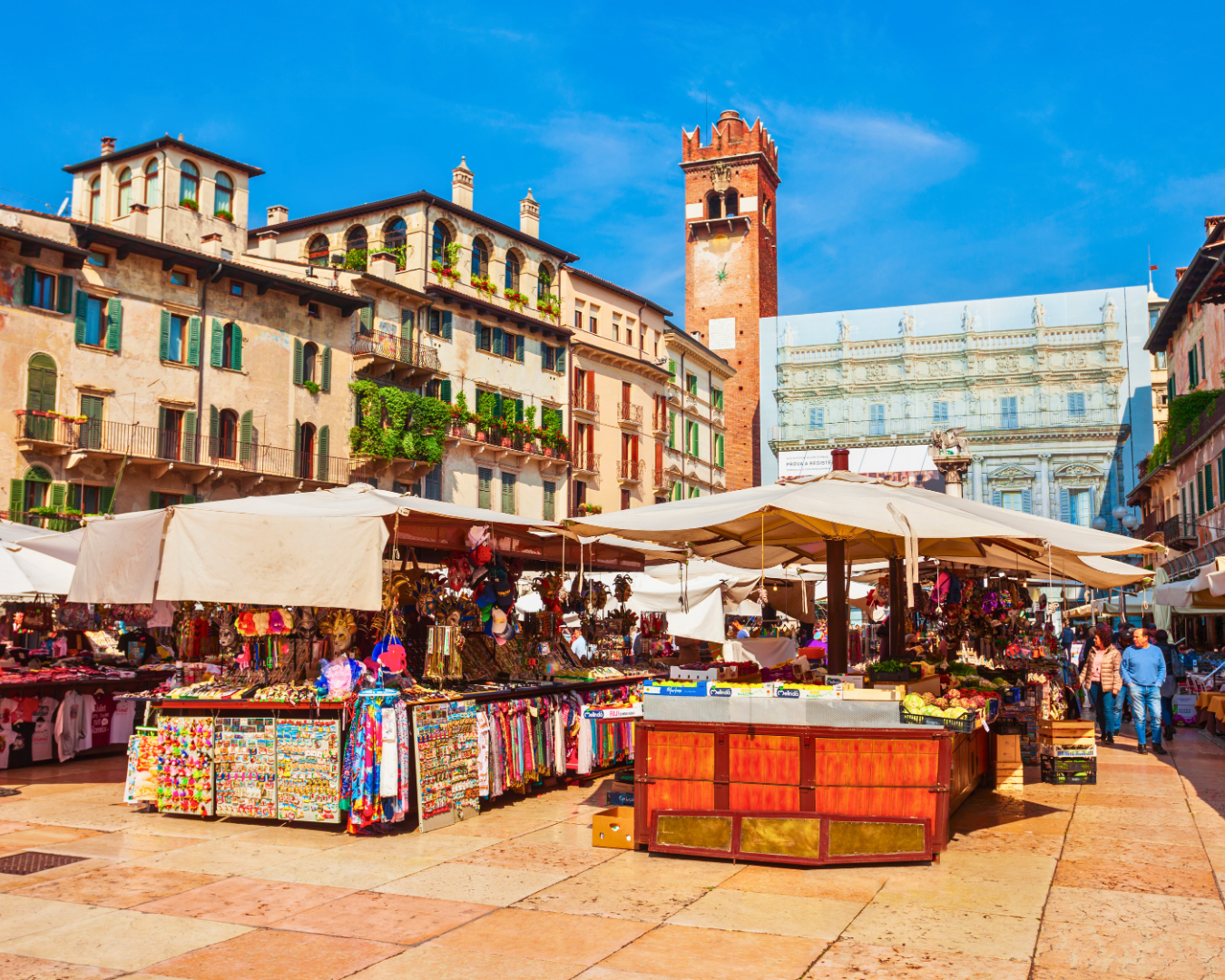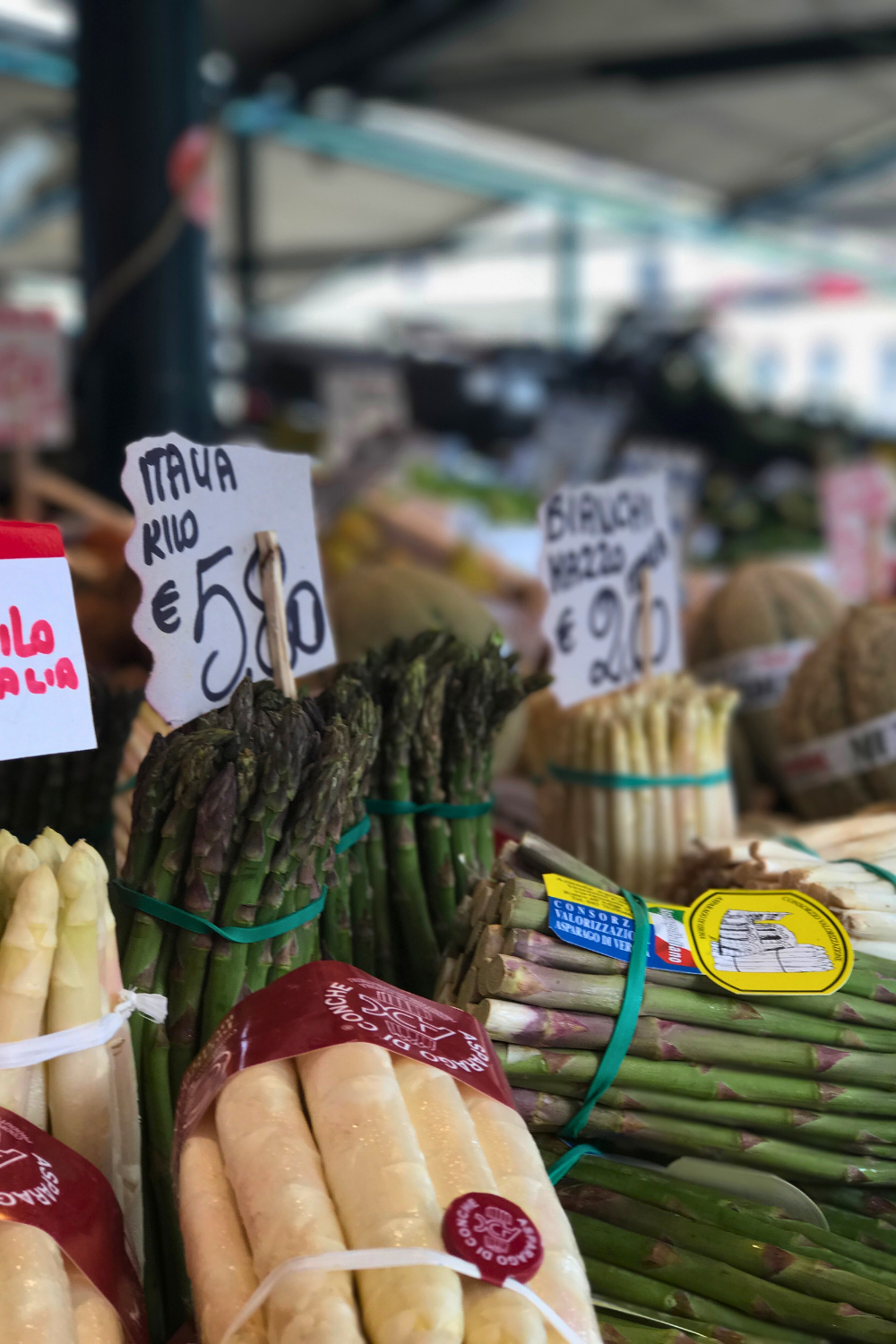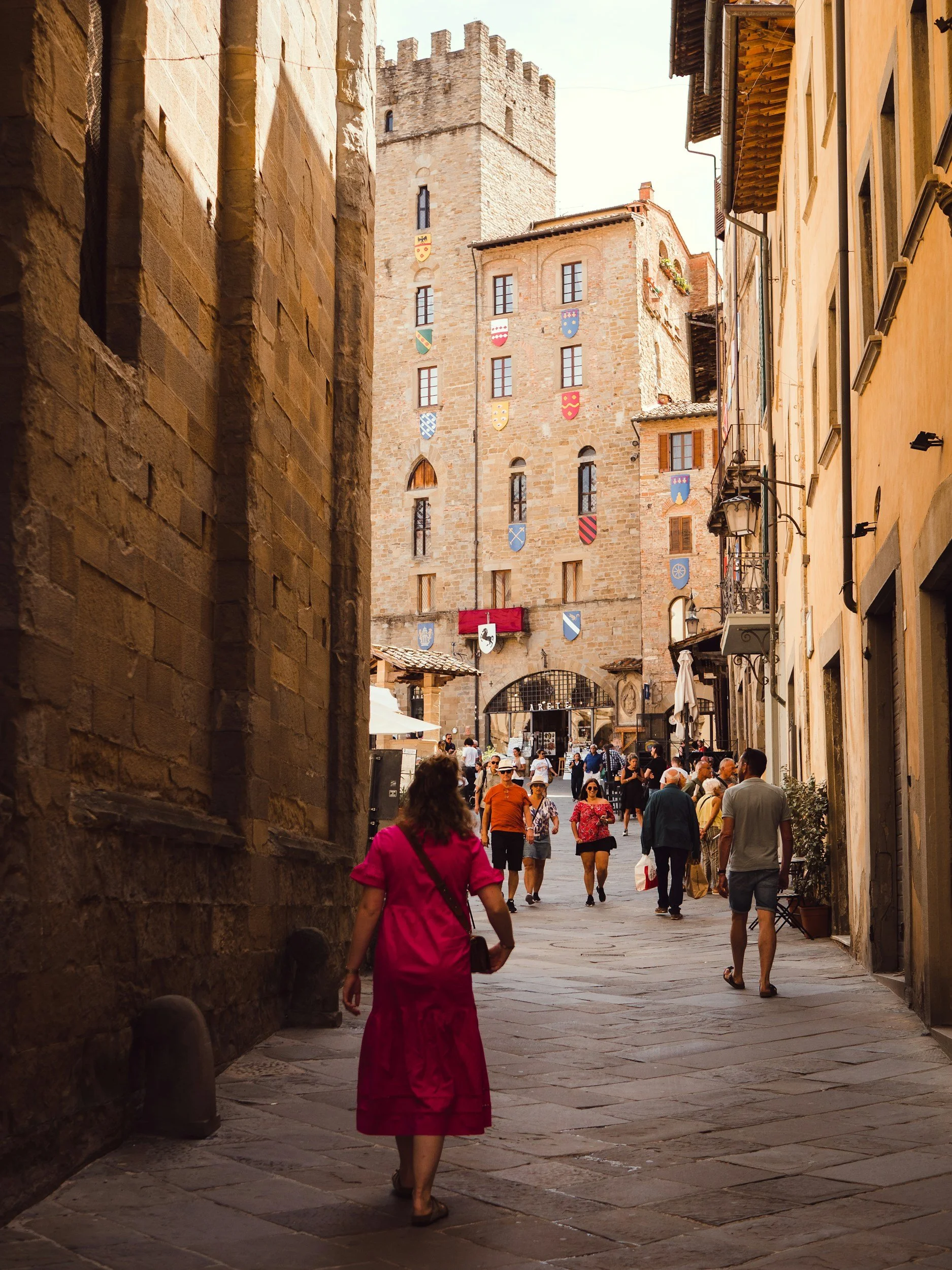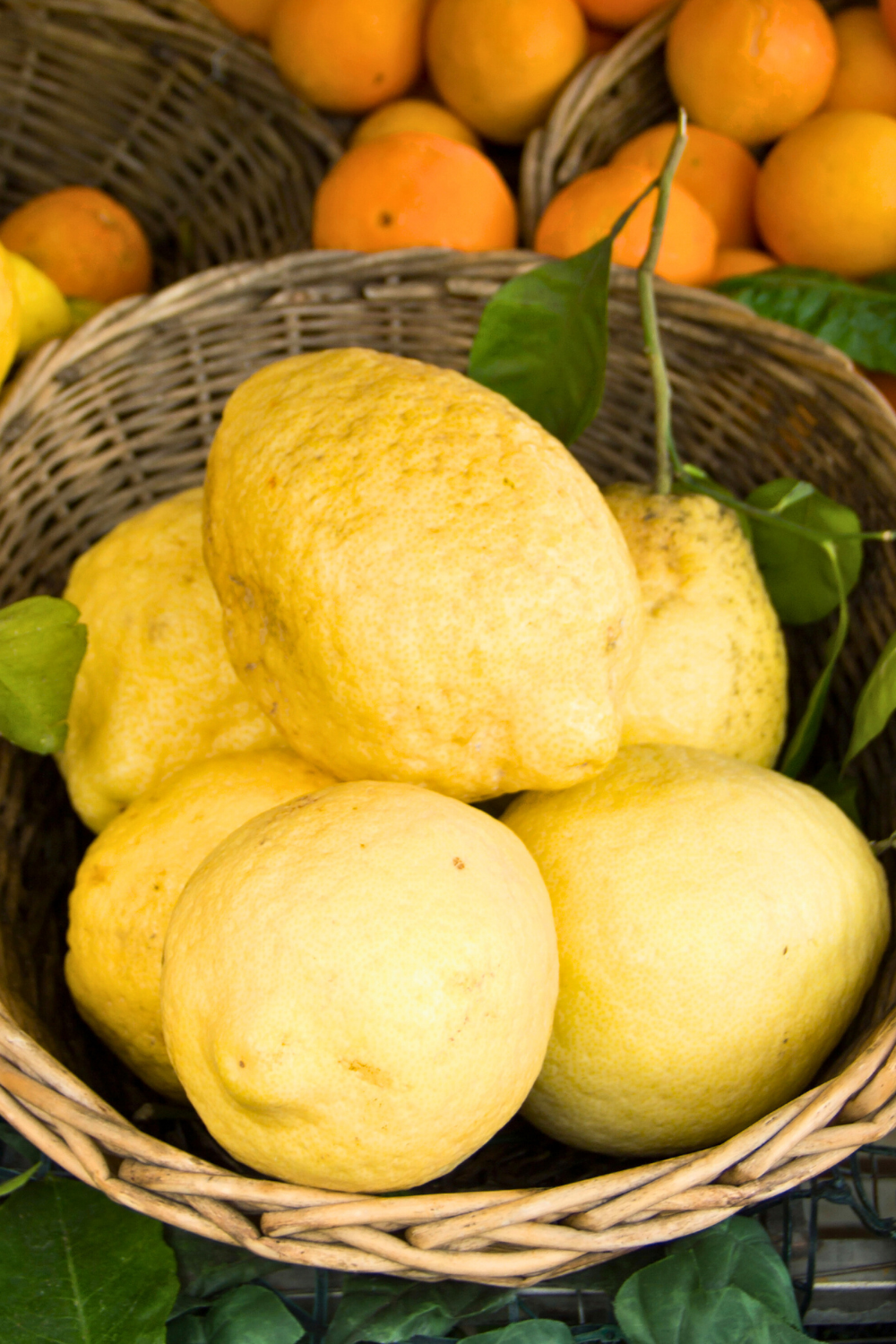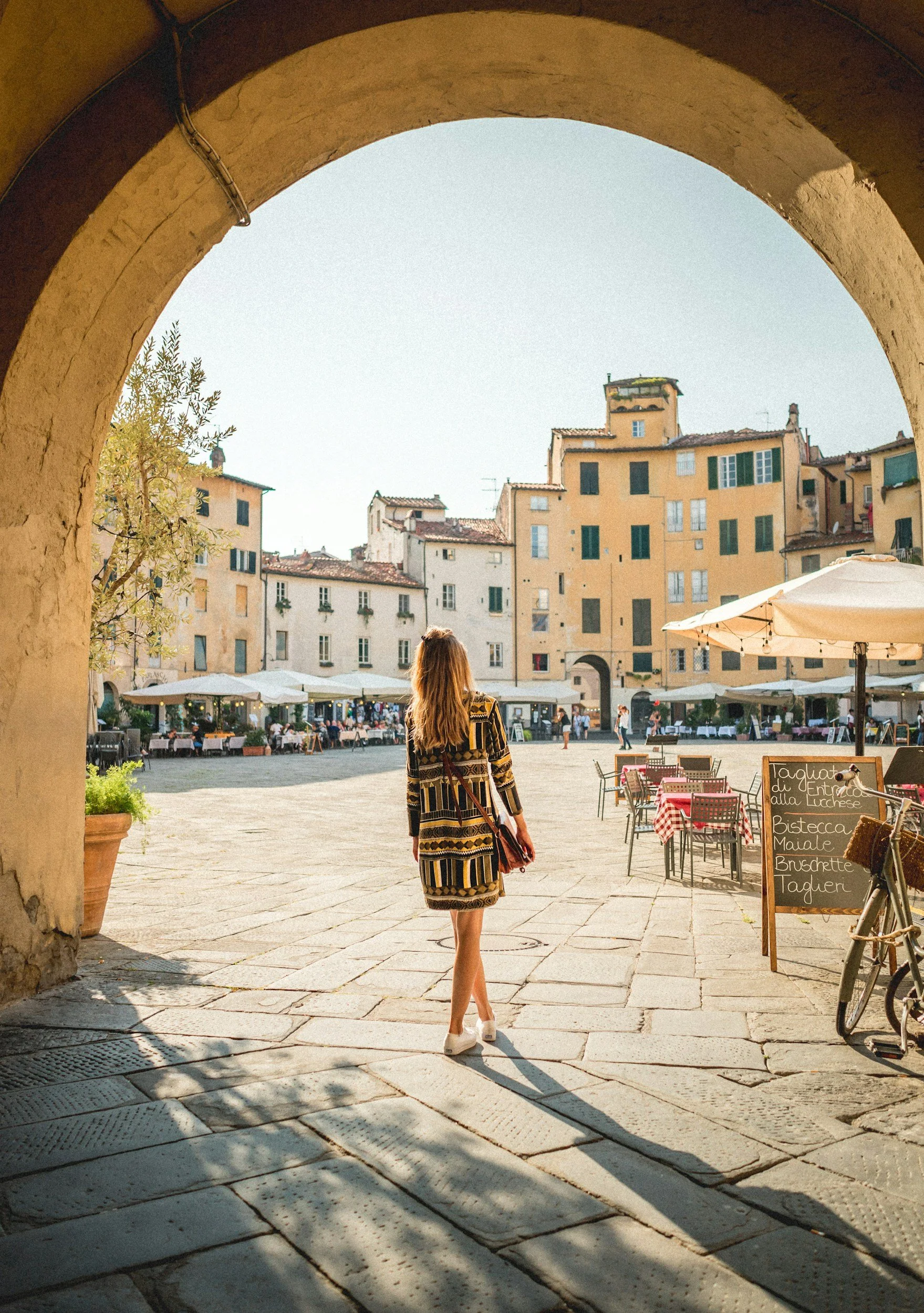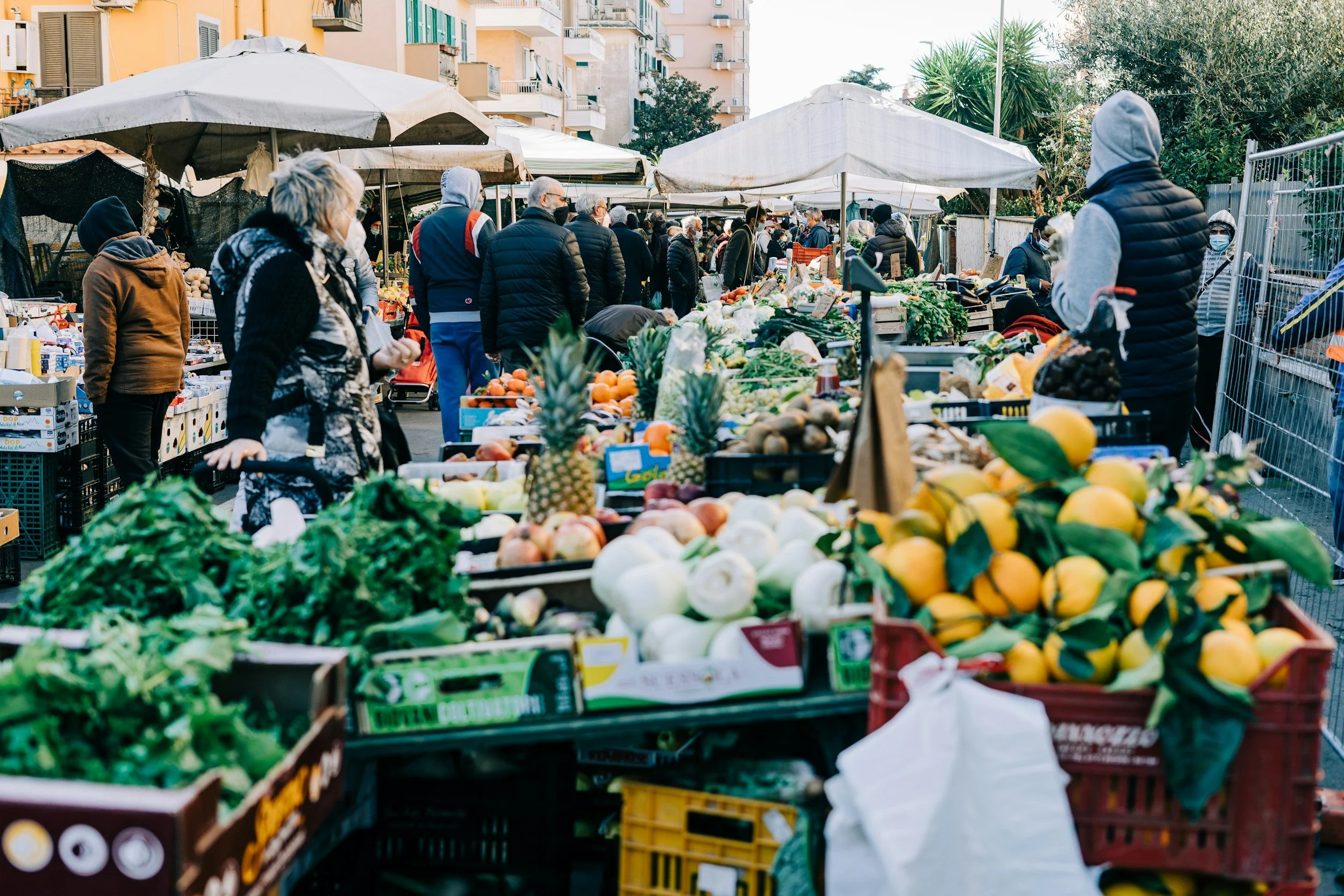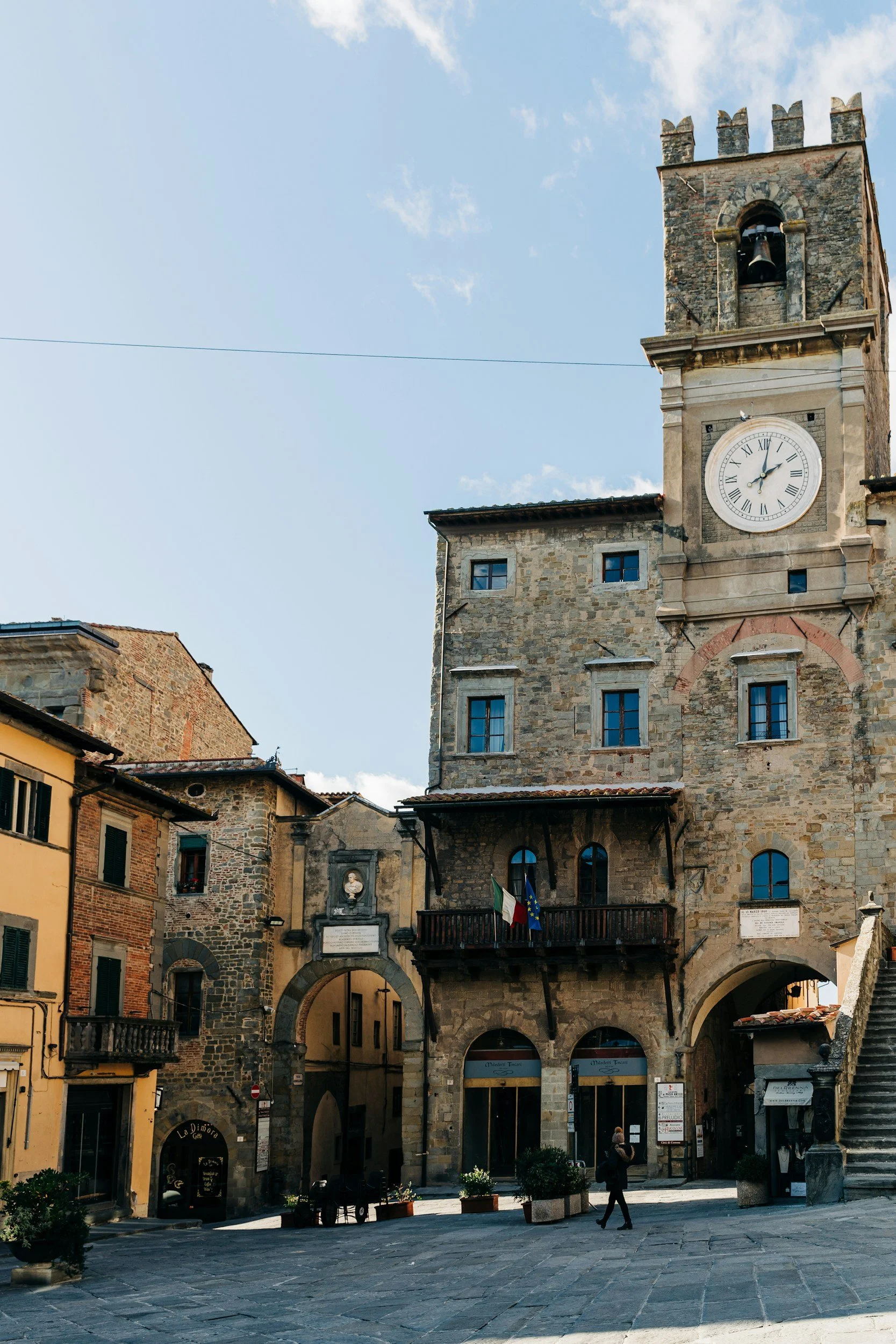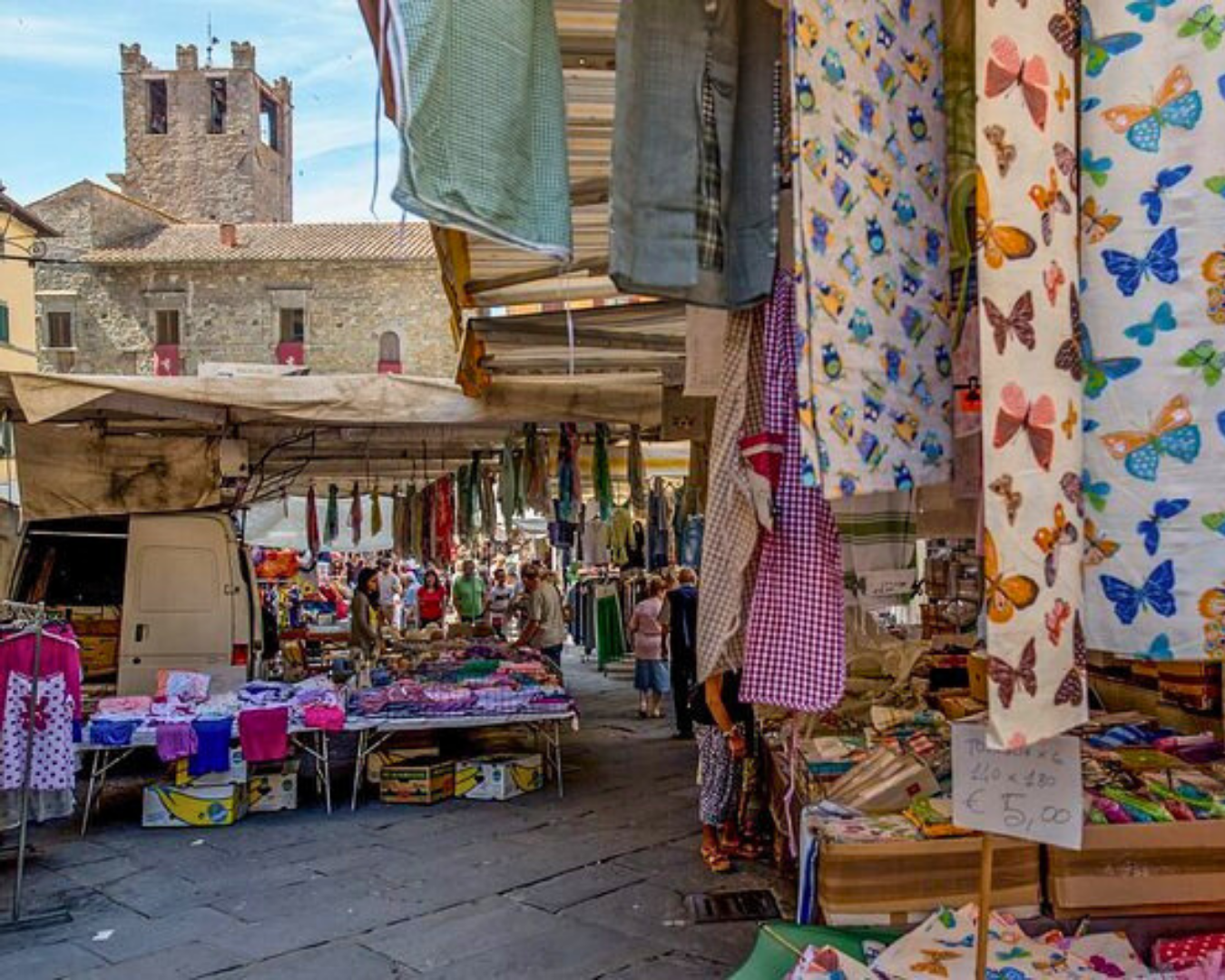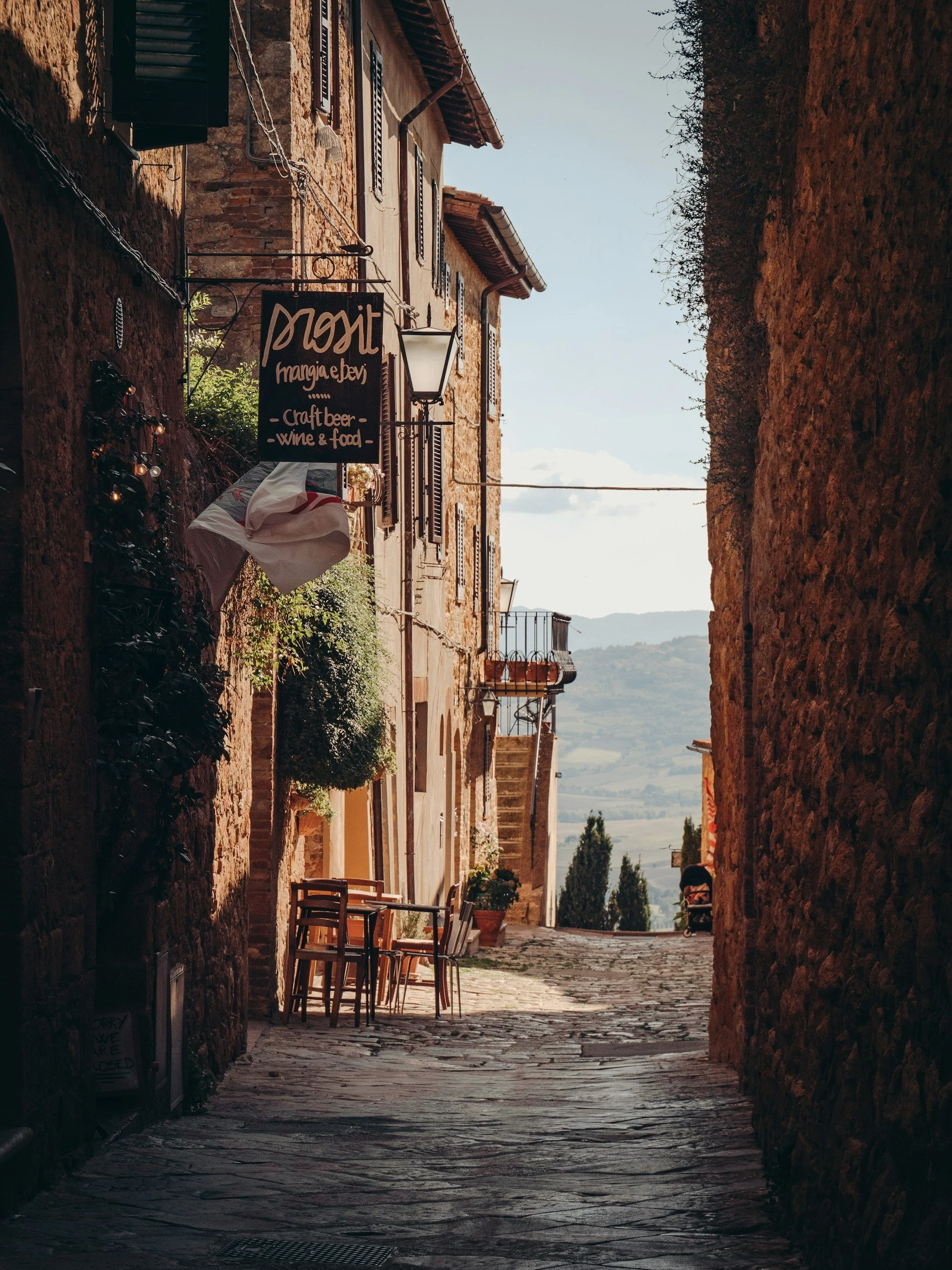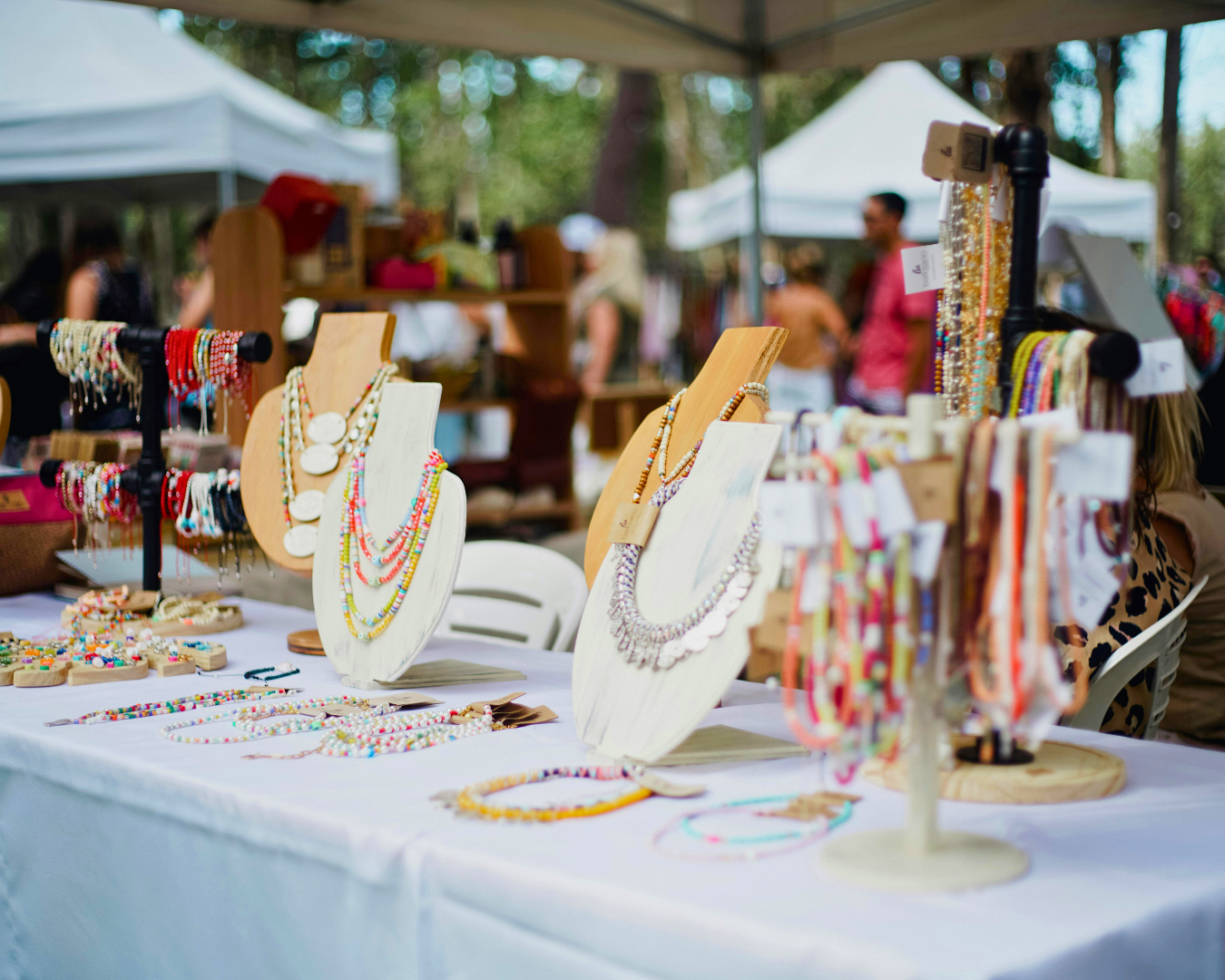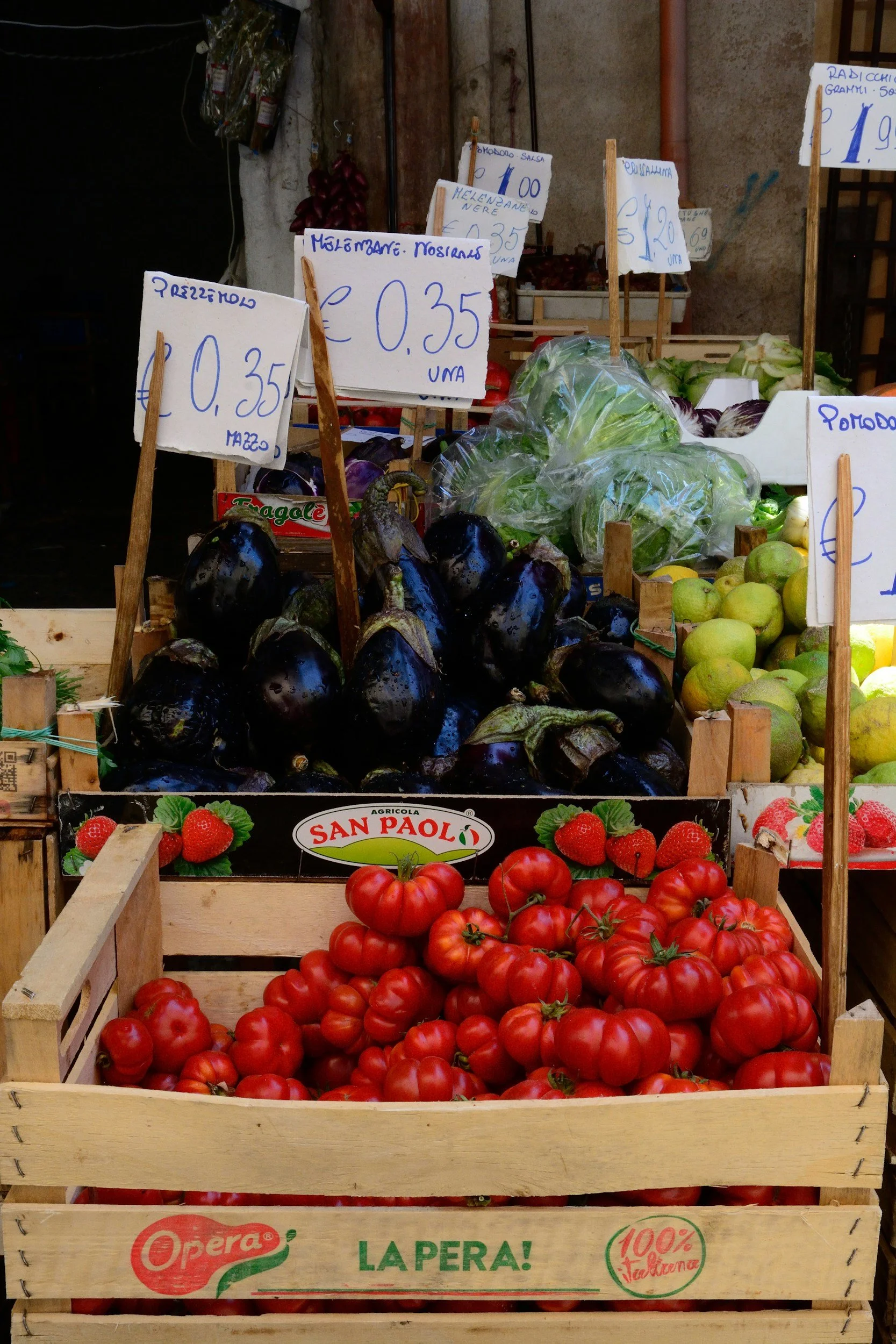How to Experience Italy’s 5 most Authentic Small-Town Markets Without the Crowds
Italy is a country that’s always buzzing with life… whether it’s the art, the culture, or the food, there’s always something to take in. But for those of us who aren’t drawn to the crowds of tourists or the crowded piazzas, there’s another side to Italy that’s just as special. The heart of Italy can be found in its small towns, where the markets feel like an extension of everyday life. They’re calm(ish), full of character, and represent the kind of authentic experience that’s often hard to find in more touristy spots.
This guide is for anyone looking to step away from the usual tourist trail and experience Italy through its smaller, quieter markets. These are the places where you can find fresh produce straight from local farms, where vendors greet you with a smile, and where the atmosphere is relaxed, just like the towns themselves. It’s about connecting with the real Italy - the one that’s not on the postcard but is still full of charm and surprises.
Instead of rushing through a packed market in Rome or Florence, you’ll get a chance to slow down, chat with the vendors, and pick up something that truly reflects the culture of the region. Whether it’s homemade pasta, fresh cheese, or handcrafted goods, the markets in these small towns let you experience Italy in a way that feels personal and genuine.
If you’re looking to skip the crowds and discover a different side of Italy, these markets are the perfect place to start. They offer a chance to experience the country like a local - at your own pace, away from the hustle, and surrounded by the true spirit of Italy.
Why Visit Small-Town Markets in Italy?
Small-town markets in Italy provide an experience that feels worlds apart from the overrun tourist destinations. These markets are where locals shop, where traditions are upheld, and where you get a true, unfiltered glimpse of Italian life. Unlike the bustling crowds of Rome or Venice, these markets invite you to slow down and connect with the real Italy: one that’s often hidden from the masses.
What makes these markets so special? For starters, they’re authentic. You won’t find mass-produced souvenirs or overpriced tourist trinkets here. Instead, you’ll discover a variety of unique, handmade goods that tell the story of the region. Think local cheeses, like the creamy Pecorino from Pienza, or the rich, earthy olive oils pressed in the hills of Tuscany. You’ll also come across artisanal textiles, like hand-woven scarves or linens that have been passed down through generations. Each item is a piece of the town’s culture, crafted by the people who have lived there for years.
Take, for example, the markets in Arezzo. Here, you won’t find plastic goods or mass-produced jewelry; instead, you’ll find antique furniture, vintage books, and handcrafted leather items. Every market stall has its own story, with some of the vendors even explaining the origins of their goods. It’s the kind of place where you can pick up a small, hand-painted ceramic from a local artisan, knowing that the piece was made with care and skill in the very town you’re exploring.
In a small-town market, you’re more likely to find local farmers offering you a taste of their seasonal produce or cheese makers inviting you to sample their latest batch. You might strike up a conversation with a vendor about their family’s history or hear a story about the land that produces the very grapes used to make the town’s wine. The connections you make are personal and often rooted in generations of tradition.
In contrast to the rushed feeling you might get in a big city market, small-town markets allow you to take your time. There’s no need to push through a sea of people; instead, you can wander the streets at your own pace, savoring each moment, chatting with the locals, and discovering new flavors, textures, and sounds. It’s all about immersing yourself in the Italian food culture, which is one of the best ways to experience the country in a genuine, intimate way.
For example, in Cortona, the Saturday morning market offers everything from fresh vegetables to handmade jewelry. Vendors sell local honey, fresh bread, and local meats, with the scent of sizzling sausages and roasting vegetables filling the air. Here, the focus isn’t on quantity but on quality. You can grab a few fresh tomatoes from a local farm, chat about the variety with the vendor, and leave with something that’s not only fresh but also deeply connected to the place you’re visiting.
One of the best parts about these small-town markets is the food culture. You get to experience Italy’s rich culinary tradition firsthand, in a way that feels personal and intimate. Take the Pienza market, for example - famous for its Pecorino cheese. While wandering through the market, you might stop by a stall offering samples of the cheese, and the vendor will tell you how the cheese is made from local sheep’s milk and what makes it so unique to the region. You can also try out some local olive oils and seasonal fruits. The freshness and quality are unmatched, and because you’re engaging directly with the people behind the products, it feels less like a transaction and more like a shared experience.
Unlike larger, more commercialized markets, the vendors in these small Italian towns aren’t just selling products; it genuinely feels like they’re sharing their culture, their stories, and their pride in what they do. You might even be invited to share a cup of local wine with the vendor, or hear about the history behind a handmade scarf. These are experiences that you can’t get in larger tourist hubs, and they’re what make small-town markets so special.
You might be in a town like Orvieto, where the Wednesday market offers fresh produce and artisanal bread. As you wander through the stalls, you might find yourself chatting with a local baker about the history of the town’s bread-making tradition. In Pienza, as you sample cheese, you might learn about the techniques passed down from one generation to the next. Every conversation you have adds a new layer to your experience, making each market visit feel like a small but meaningful discovery.
So why should you visit small-town markets in Italy? Aside from the fact that they’re far from the overwhelming crowds of big cities, they offer an authentic connection to Italy’s traditions, culture, and food. You’re not just buying goods; you’re learning about the people, the land, and the heritage that make Italy so unique. These markets are where the heart of Italy beats - the quiet, humble, unfiltered Italy that’s just waiting to be explored.
1. Arezzo – Antique Treasures and Timeless Charm
Tucked away in Tuscany, Arezzo is one of those places that feels like a secret. While cities like Florence get all the attention, Arezzo is a charming, historic town that lets you experience the real Italy without the crowds. Every first weekend of the month, Piazza Grande becomes the backdrop for one of Italy’s most beloved antique markets. What sets Arezzo’s market apart from others is the variety of treasures you can find - everything from vintage books and rare collectibles to handcrafted jewelry and leather goods. It’s a place where the market feels less like a shopping trip and more like a deep dive into Italy’s past.
As you stroll through the market, you’ll notice the laid-back vibe that makes Arezzo special. Unlike more tourist-heavy destinations, this market isn’t rushed. You’re not fighting crowds to get a glance at a souvenir; instead, you have time to chat with the friendly vendors, hear the stories behind their goods, and maybe even pick up a little history along the way. It’s an experience where you can take your time and truly enjoy each moment.
Arezzo itself is an unassuming beauty. The town is full of medieval architecture and Renaissance art, but the pace is much slower than what you’ll find in cities like Florence or Rome. It’s easy to get lost in Arezzo, but in the best way possible: wandering through its narrow streets, popping into hidden cafes, and stumbling upon local trattorias where you can enjoy an authentic meal without the crowds.
One of the things that makes Arezzo such a great place to visit is how untouched it feels by mass tourism. You can walk around, take in the sights, and not feel like you’re in a city designed for tourists. Instead, it feels like you’re experiencing Italy like a local, in a town that still holds its history close.
Insider Tip: After you’ve spent time exploring the antique market, head over to a café in Piazza Grande for a refreshing espresso. You’ll find locals sipping coffee, catching up with friends, and just enjoying the slower pace of life in Arezzo. The Piazza is a great place to sit back, relax, and soak in the atmosphere before continuing your exploration of this charming town.
How to Get There: Arezzo is easy to reach by train from Florence, which takes just about an hour. If you’re coming from Rome, the train ride will take about 2.5 hours, making it an ideal spot for a weekend getaway. Whether you choose to drive or take the train, Arezzo is a peaceful escape that feels far removed from the crowds but is still accessible enough for a short trip.
2. Lucca – A Taste of Tuscany’s Slow Life
If you’re looking for a town that captures the essence of Tuscany’s slow life, Lucca is where you’ll find it. While towns like Florence and Pisa get the spotlight, Lucca offers a quieter, more relaxed atmosphere - ideal for those who want to experience Tuscany without the tourist frenzy. The town is known for its perfectly preserved Renaissance walls, which not only offer stunning views of the town but also serve as a peaceful place to stroll or bike.
One of the highlights of Lucca is its weekly market in Piazza dell'Anfiteatro. Held every Saturday, this charming market brings together local produce, handmade goods, and a range of artisanal crafts. Walking through the market, you’ll find fresh fruit and vegetables, locally made leather goods, and delicious cheeses—all sold by friendly locals eager to share their goods and stories. It’s the perfect place to grab something authentic to bring home or just to enjoy as you explore the town.
What makes Lucca’s market stand out is the atmosphere. Unlike the larger, more commercialized markets in cities like Florence, the market here feels personal and unhurried. It’s not about rushing through to check off a list of things to buy; it’s about enjoying the process. You can take your time, chat with the vendors, and get a real taste of Tuscany. The locals are more than happy to tell you about the food they’re selling and even give you recommendations on where to eat in town or how to pair a good wine with that Tuscan cheese.
And it’s not just about the market. Lucca itself is a beautiful town with so much to offer. Its historic center is full of winding streets, lovely squares, and peaceful corners that invite you to take your time and explore. You’ll find boutiques selling handmade leather bags, cafés serving some of the best coffee in Tuscany, and restaurants offering delicious local dishes. The town is far less crowded than places like Florence or Rome, so you get the chance to really enjoy the atmosphere without feeling overwhelmed by tourists.
If you’re craving a break from the market, head to Caffè di Simo: one of the oldest cafés in Lucca. It’s tucked on Via Fillungo, the town’s main shopping street, and has been serving coffee since 1800. The atmosphere is charming, with a beautiful interior that feels frozen in time. Grab a seat at one of the outdoor tables and people-watch while sipping a perfectly brewed cappuccino.
How to Get There: Lucca is easily accessible from Florence by train, taking just under 1.5 hours. If you're coming from Pisa, it’s just a 30-minute train ride, making Lucca the perfect addition to any Tuscan road trip. If you’re up for it, renting a car and driving through the Tuscan countryside gives you more flexibility to explore the region at your own pace.
3. Cortona – An Italian Market with a View
If you’re seeking a town in Tuscany where the views are as breathtaking as the markets, Cortona should be at the top of your list. Perched high in the hills of Val di Chiana, Cortona offers some of the most stunning panoramas in Tuscany, and its Saturday market is just as impressive. This small, charming market, located in Piazza della Repubblica, is a local favorite where vendors sell fresh seasonal produce, local cheeses, and handcrafted goods. You’ll find everything from handmade baskets to beautifully crafted olive wood items, all set against the backdrop of Cortona’s gorgeous hilltop views.
What makes the Cortona market special is its relaxed pace. It’s not about rushing through to buy something - it’s about wandering through the stalls, taking in the sights, and savoring each interaction. The vendors here are friendly, passionate about what they sell, and more than willing to chat about the history of their goods. Whether you’re picking up local honey, handmade pasta, or some delicious local wine, you’ll feel the connection to the land and the people who live here.
Cortona itself is a town that invites you to slow down. The narrow, winding streets are lined with stone houses, art galleries, and family-run trattorias that serve up hearty, authentic Tuscan dishes. You can easily spend hours wandering the streets, taking in the medieval architecture, popping into local shops, or finding a quiet café to relax. The town feels like a time capsule, where you can experience both history and modern-day Italy in the same breath.
After exploring the market, head to La Loggetta, a local trattoria that’s tucked away on a quiet side street. This family-owned gem serves up authentic Tuscan dishes, and their pappa al pomodoro (a hearty tomato and bread soup) is a must-try. The terrace offers a perfect spot to enjoy your meal while soaking in the view of the Val di Chiana below.
How to Get There: Cortona is just a short 30-minute drive from Arezzo and can easily be reached from Florence by car in just over two hours. If you’re traveling by train, it’s a 1.5-hour journey from Florence to Camucia, the closest station to Cortona, and from there, it’s a short bus or taxi ride up to the town.
If you're looking to pair your market experience with a slower pace of travel, consider visiting some of Tuscany’s lesser-known towns.
To get a deeper sense of Tuscany’s peaceful side, check out our guide on the best towns for a slow travel experience: Slow Travel in Tuscany: 4 Tranquil Towns for Cozy Cafés and Scenic Walks.
4. Pienza – The Cheese Lover’s Dream Destination
Nestled in the rolling hills of Val d’Orcia, Pienza is a town that seems almost designed for food lovers. Often hailed as the birthplace of Pecorino cheese, Pienza is a charming, timeless destination where food and culture come together beautifully. Every Wednesday morning, the town’s historic Piazza Pio II transforms into a bustling market, offering everything from seasonal produce and local wines to, of course, the famous Pecorino di Pienza.
The market is a smaller, more intimate affair than the larger ones in Tuscany, but that’s part of its charm. Here, you won’t find crowds pushing past you to get a glimpse of the goods. Instead, you can stroll leisurely through the square, sampling fresh fruits, locally-made breads, and handcrafted sausages - each bite a true reflection of the region’s flavors. The market is a celebration of Tuscany’s agricultural heritage, offering an authentic taste of the land with ingredients that are as fresh as they come.
What truly makes Pienza stand out, however, isn’t just the market: it’s the town itself. The streets are lined with artisan shops, selling everything from handmade leather goods to woven baskets and ceramics that showcase the skill and creativity of local craftspeople. Pienza has a way of slowing down time, giving you the space to take in the picturesque views of the surrounding countryside, explore the cobblestone streets, and enjoy the peaceful atmosphere. Unlike some of Tuscany’s more famous towns, Pienza is relaxed and approachable, with an air of serenity that invites you to linger longer.
The town’s layout is also a testament to Renaissance urban planning, designed by Pope Pius II himself. As you walk through its narrow alleys and across its beautiful piazzas, you’ll be struck by how perfectly the town blends with the landscape around it - almost as if it was made to be admired. And, of course, there’s no shortage of charming spots where you can stop for a coffee, a gelato, or a glass of local Vino Nobile.
After exploring the market, head over to La Buca delle Fate, a cozy family-owned eatery tucked in a quiet corner of town. It’s one of the best places in Pienza to indulge in the local specialty - Pecorino cheese, which pairs wonderfully with local honey and freshly baked bread. The combination is simple yet divine, offering a true taste of Tuscan tradition. The ambiance of the restaurant makes it feel like you’ve discovered a local secret: authentic, unpretentious, and entirely memorable.
Pienza is also home to a few must-see spots that are worth taking the time to visit. One of the most famous is Palazzo Piccolomini, the Renaissance palace built for Pope Pius II. The gardens here offer spectacular views of the surrounding Val d’Orcia, a UNESCO World Heritage landscape that looks as though it’s been pulled straight from a painting. It’s the perfect place to relax, take in the beauty, and enjoy some downtime after a market visit.
How to Get There: Pienza is easily accessible from Montepulciano, just a 15-minute drive through the gorgeous Tuscan countryside. If you're coming from Siena, the drive is about 1.5 hours, with scenic views that make the journey part of the experience. If you’re traveling by public transportation, there are buses from both Siena and Montepulciano, though renting a car will give you more flexibility to explore the area at your own pace.
5. Orvieto – A Stunning Market Above the Clouds
If you’ve ever dreamed of wandering through a town perched high above the Italian countryside, Orvieto is where that dream becomes reality. Sitting atop a volcanic plateau in central Italy, this charming town offers breathtaking views of the surrounding Umbrian countryside, but it’s not just about the views. Orvieto’s Wednesday market in Piazza del Duomo brings the town’s historic charm to life in a way that feels fresh and inviting, without the overwhelming crowds of more famous destinations.
The market in Orvieto is a delightful blend of fresh seasonal produce, local wines, cheeses, and handmade crafts. What sets Orvieto’s market apart from others is its relaxed, easygoing vibe. There’s no rush here; it’s a chance to take your time, chat with the friendly local vendors, and sample everything from cured meats to artisan breads and local olive oils. The market is smaller than some of Italy’s larger markets, but it’s rich in quality and authenticity. The umbrian truffles and local honey are must-tries, and you’ll quickly find that the produce here is like nothing you’ve tasted before - fresh, flavorful, and packed with the essence of the land.
Orvieto itself is like a living museum, with a history that stretches back to Etruscan times. Its iconic Duomo, a stunning cathedral with intricate carvings and mosaics, dominates the town’s skyline, making it one of the most impressive sights in all of Italy. As you wander through the market and the surrounding streets, you’ll be immersed in the history of the place - from its medieval buildings to its ancient underground caves. Orvieto blends the old and the new beautifully, giving you a deeper connection to both its culture and its people.
While the market itself is a highlight, Orvieto is also known for its underground tours, which are one of the town’s best-kept secrets. The Orvieto Underground consists of an extensive network of caves and tunnels that date back to ancient times. These caves were used for everything from storage to hiding during times of war. A guided tour through the underground gives you a fascinating glimpse into the town’s history and a chance to see the area from a completely different perspective.
After you’ve explored the market and wandered through the town, head to Trattoria La Palomba, a charming local eatery that serves traditional Umbrian dishes. Try the truffle pasta—a local specialty that captures the essence of the region’s famous truffles. The atmosphere here is cozy and welcoming, perfect for savoring a hearty meal after a day of market shopping.
Getting There: Orvieto is easily accessible from Rome by train, taking just about 1.5 hours. It’s also a 1-hour drive from Perugia, making it a great day trip from either city. The town’s train station is located a bit outside of the historic center, but there’s a funicular (a type of cable car) that takes you up to the top of the hill where the town is located. The funicular ride itself offers stunning views of the surrounding countryside and is a fun way to reach the heart of Orvieto.
How to Experience Italian Markets Like a Local
Exploring Italy’s markets is one of the best ways to really connect with the country. While it’s tempting to rush through and tick things off your list, the real beauty lies in taking your time and experiencing the market like the locals do. It’s not just about shopping—it’s about enjoying the atmosphere, chatting with vendors, and maybe even learning a thing or two about the food and culture. Here are a few tips to help you experience Italy’s markets the way the locals do:
1. Arrive Early – Beat the Rush and Enjoy the Quiet
Markets are always better early in the morning. Not only do the stalls look their best, but the atmosphere is much more relaxed. By midday, the market can get crowded and the calm, leisurely vibe fades a bit. Getting there early means you can enjoy browsing at your own pace, without rushing through the crowds. Plus, you’ll have the chance to speak to vendors who aren’t in a rush, so you can learn a bit more about what you’re buying.
Keep in mind, if you’re in a smaller town, it’s often quieter on weekdays. That’s when you’ll find the most local vendors—and a chance to chat with them without all the tourists around.
2. Learn a Few Words in Italian – It Goes a Long Way
You don’t need to be fluent, but a few simple phrases like “Quanto costa?” (How much?) or “Grazie!” (Thank you) will definitely help you connect with the people at the market. Italians appreciate when you make an effort, and it’s a great way to get them to share a bit more about their products. Plus, it can be fun to try out some of the local language - it makes the experience feel more personal.
Don’t worry about making mistakes. The effort counts, and locals are often happy to help you practice.
3. Slow Down and Take It All In
Italy’s markets are about much more than just picking up food or goods—they’re an experience. Don’t rush through, just ticking things off your list. Spend some time chatting with vendors, asking about the produce, and really soaking in the atmosphere. Whether you’re sampling local cheeses or just enjoying the sights and sounds, taking your time is part of the experience.
If you see something that catches your eye - whether it’s a piece of art, a type of food you haven’t tried, or a vendor who seems interesting—take a moment to stop and engage. It’s often the smaller, unplanned moments that make your visit memorable.
4. Taste Everything – Don’t Be Shy to Try Something New
Italian markets are made for tasting, so don’t be afraid to ask for a sample. Most vendors will let you try their cheeses, cured meats, and fresh produce before you buy. It’s part of the fun. Tasting is the best way to know if a product is really what you want - and it’s also a great way to learn about the region’s flavors.
When in Tuscany or Umbria, try the local pecorino or olive oils. In Sicily, you can’t miss the citrus fruits or granita (a type of ice). It’s a quick, fun way to connect with the food culture of the area.
5. Look Beyond the Souvenirs – Find Something Unique
Instead of picking up the usual trinkets, look for something that really reflects the region you’re in. That could be a handmade piece of pottery, a local spice mix, or a jar of homemade jam that reminds you of the flavors of the area. These aren’t just souvenirs - they’re items that help you take a bit of Italy back home with you.
Look for regional specialties: for example, if you’re in Piedmont, find some hazelnut products or a bottle of their famous Barolo wine. In Sicily, the citrus fruits and cannoli make excellent gifts. These are the things that feel connected to the land and make for more meaningful keepsakes.
6. Be Open to New Experiences – You Never Know What You’ll Find
Markets are full of surprises. Maybe you’ll stumble across a vendor selling fresh truffles in a small mountain town, or find a stand offering the most amazing local pastries you’ve never seen before. Ask questions, be curious, and allow yourself to be open to whatever catches your attention. Some of the best experiences happen when you let go of expectations and just see where the market takes you.
Trippers Terminal Tip: If a vendor seems passionate about something - ask about it. They’re usually eager to share stories, tips, or even family recipes that can really enrich your experience.
Don’t Rush Off – Take a Moment to Just Enjoy
After you’ve explored the market, take a moment to relax. Find a quiet spot, grab a coffee, and just enjoy the town you’re in. Whether it’s a café in the market square or a bench by a peaceful fountain, there’s no better way to wrap up your visit than by taking it all in. In the end, markets are not just about what you buy - they’re about the experience of being present in a place and savoring the simple joys of the day.
FAQ – What you need to know about Italian markets
What time do Italian markets open?
Most Italian markets start early in the morning, typically around 7:00 AM to 9:00 AM, especially the outdoor ones in smaller towns. The best time to visit is first thing in the morning, when the stalls are fully stocked, and you can enjoy a calm atmosphere before the crowds arrive. Markets usually close around 1:00 PM to 2:00 PM, but some may stay open longer on weekends or special market days.
How do I find local markets in Italy?
Finding local markets in Italy can be part of your travel adventure. A great way to uncover them is by asking locals or checking out local tourism websites. You can also use platforms like Google Maps and search for “mercato locale” (local market) in the area you're visiting. Many towns have weekly markets, especially in smaller towns and villages, and these are often the best for authentic experiences.
Long-tail keyword focus: "How to find local markets in Italy?" "Where to visit local markets in Italy"
Are the markets in Italy crowded?
It depends on the location and time of day. In touristy cities like Rome, Florence, or Venice, markets can be crowded, especially in peak tourist seasons. However, in smaller towns, off-the-beaten-path markets tend to be quieter and offer a more relaxed experience. Visiting early in the morning helps avoid the crowds. Weekdays are usually less crowded than weekends.
Can I find vegan food at Italian markets?
Yes, vegan food is increasingly available at Italian markets, especially in bigger cities and places with an eco-conscious community. You’ll find fresh fruits, vegetables, bread, olive oils, and local grains that fit a vegan diet. Many markets also offer delicious Italian plant-based products like vegan cheeses, pasta, and sauces that can be made with local, fresh ingredients.
Best Time to Visit Pienza Market?
While Pienza is lovely year-round, the fall months (late September through October) offer an especially beautiful time to visit, as the grape harvest is in full swing, and the town is surrounded by golden vineyards. The market, with its seasonal produce and freshly pressed olive oil, is particularly vibrant during this time, offering a truly immersive experience.
How do I haggle in Italian markets?
In most Italian markets, haggling is not a common practice, especially in small towns. Prices are usually set, but it’s still worth politely asking for a better price, especially if you’re buying in bulk or from smaller, independent vendors. The best way to approach it is to be friendly, show interest in the products, and ask questions. If you’re buying fresh produce or items in larger quantities, vendors may offer a discount.
Best Time to Visit Orvieto market?
While Orvieto is lovely throughout the year, spring and fall are particularly beautiful times to visit. The town’s vineyards and olive groves are in full bloom during these seasons, and the weather is perfect for strolling through the streets and market without the intense heat of summer.
What should I buy at a traditional Italian market?
Italian markets offer a variety of fresh, authentic goods you won’t find at regular grocery stores. Fresh fruits and vegetables, local cheeses (like Pecorino in Tuscany), artisanal bread, and handcrafted goods are must-buys. Depending on the region, you can also find local wines, olive oils, balsamic vinegar, and regional specialties like truffle products or cured meats. If you’re in a coastal area, look for fresh fish and seafood too.
What are the best markets for food lovers in Italy?
Some of the best food-focused markets in Italy include the Mercato Centrale in Florence, Rialto Market in Venice, and Eataly in Rome. If you’re looking for a true local experience, head to smaller towns like Pienza for Pecorino cheese or Sicily’s markets for fresh citrus and street food. Markets in Bologna are great for pasta lovers, and Florence’s San Lorenzo Market offers an excellent selection of Tuscan specialties.
Are Italian markets open year-round?
Yes, most Italian markets are open year-round, but the types of goods available may change depending on the season. For example, fruit and vegetable markets are especially vibrant in spring and summer when produce is in peak season. In the winter months, markets may feature citrus fruits, root vegetables, and holiday treats like panettone. Some markets may have shorter hours during off-peak seasons, but they generally stay open throughout the year.
Can I visit a local market in Italy without speaking Italian?
While knowing a few words in Italian can enhance your experience, you don’t need to be fluent to enjoy the market. Many vendors speak basic English, especially in tourist-friendly towns, and they appreciate when you try to speak their language. Simple phrases like “Quanto costa?” (How much?) or “Grazie!” (Thank you!) go a long way. If you don’t speak Italian, don’t worry - just enjoy the market and engage with the vendors in whatever way feels comfortable!
How can I find the best local products at an Italian market?
To find the best local products, look for items that are specific to the region you’re in. For example, in Tuscany, seek out Pecorino cheese, local wines, and handmade pasta. In Sicily, look for citrus fruits, seafood, and pistachios. It’s also helpful to ask vendors for recommendations—they love to share their knowledge and are often proud of their regional specialties. Don’t be afraid to ask questions or ask for a taste before you buy.
If you prefer quiet over chaos, download our summer market guide for serene spots in Italy. Discover more hidden gems, away from the usual tourist crowds!

